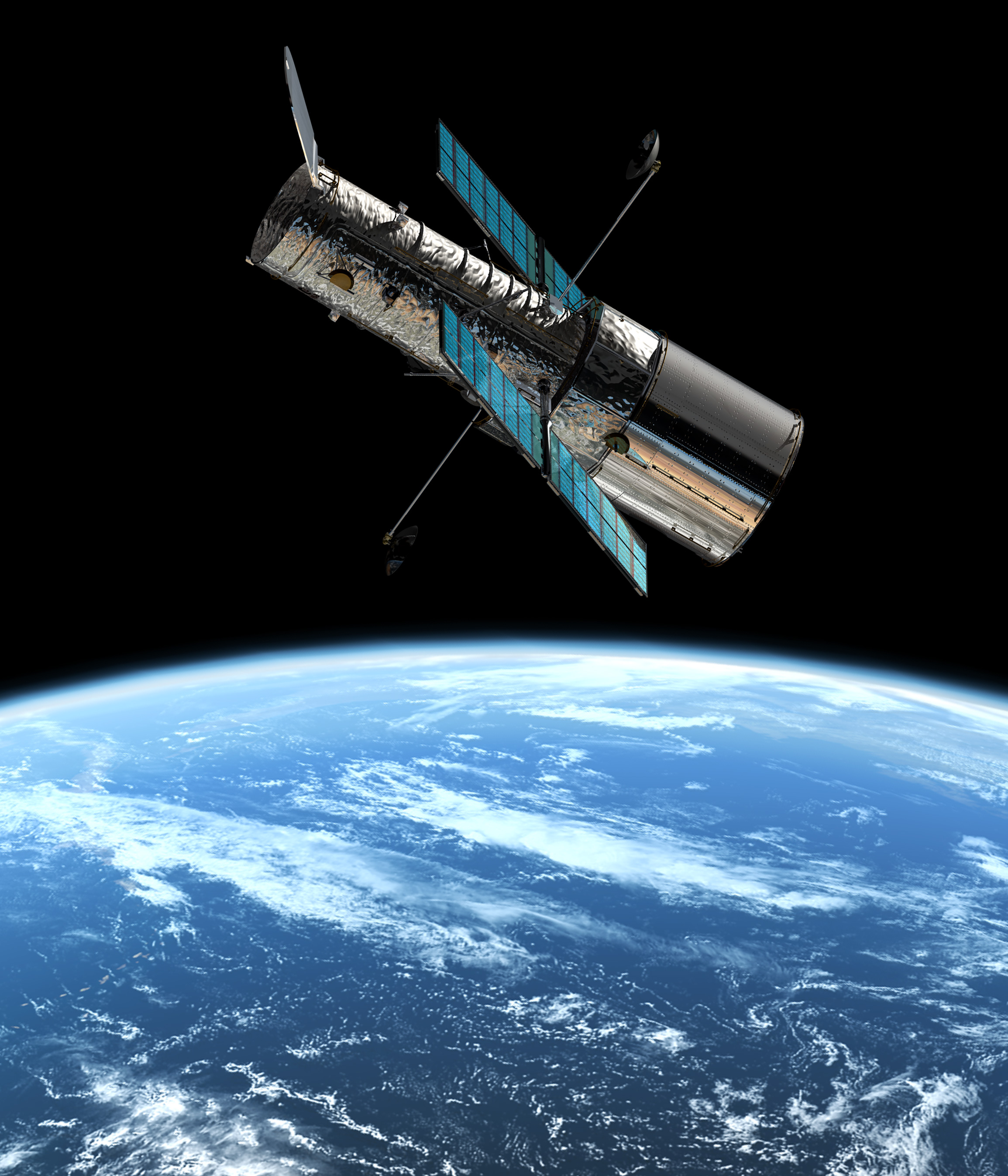The Hubble Space Telescope
The Hubble Space Telescope (HST) is the most famous - and probably most successful - space observatory ever flown. The 11 tonne telescope was placed into a 570 km high orbit around Earth by the Space Shuttle in April 1990. Circling our planet every 96 minutes, the HST has so far travelled some 5 billion km.
Hubble has sent back a huge amount of scientific data and incredibly detailed images of every type of object in the sky. By autumn 2009, it had made nearly 900,000 observations and snapped over 570,000 images of more than 29,000 objects.
The HST is named after Edwin Hubble (1889–1953), one of the great pioneers of modern astronomy. At its heart are a 2.4 m primary mirror and five science instruments that study the Universe in infrared, visible or ultraviolet light. Light collected by the main mirror is reflected onto a smaller mirror and then sent to the instruments. The data are then sent to Earth via a relay satellite.
Power for the observatory is provided by two large (2.6 x 7.1 m) solar panels. Fine Guidance Sensors are used to lock onto guide stars. This ensures the extremely high pointing accuracy needed to make very accurate observations.
Hubble is the only telescope ever designed to be serviced in space by astronauts, so that old instruments can be replaced. This proved to be invaluable when the first images were blurred and a special optical system had to be installed to correct the problem in 1993. There have been five servicing missions, the last occurring in May 2009. It is expected to continue operating until 2014.
Last modified 20 August 2013





